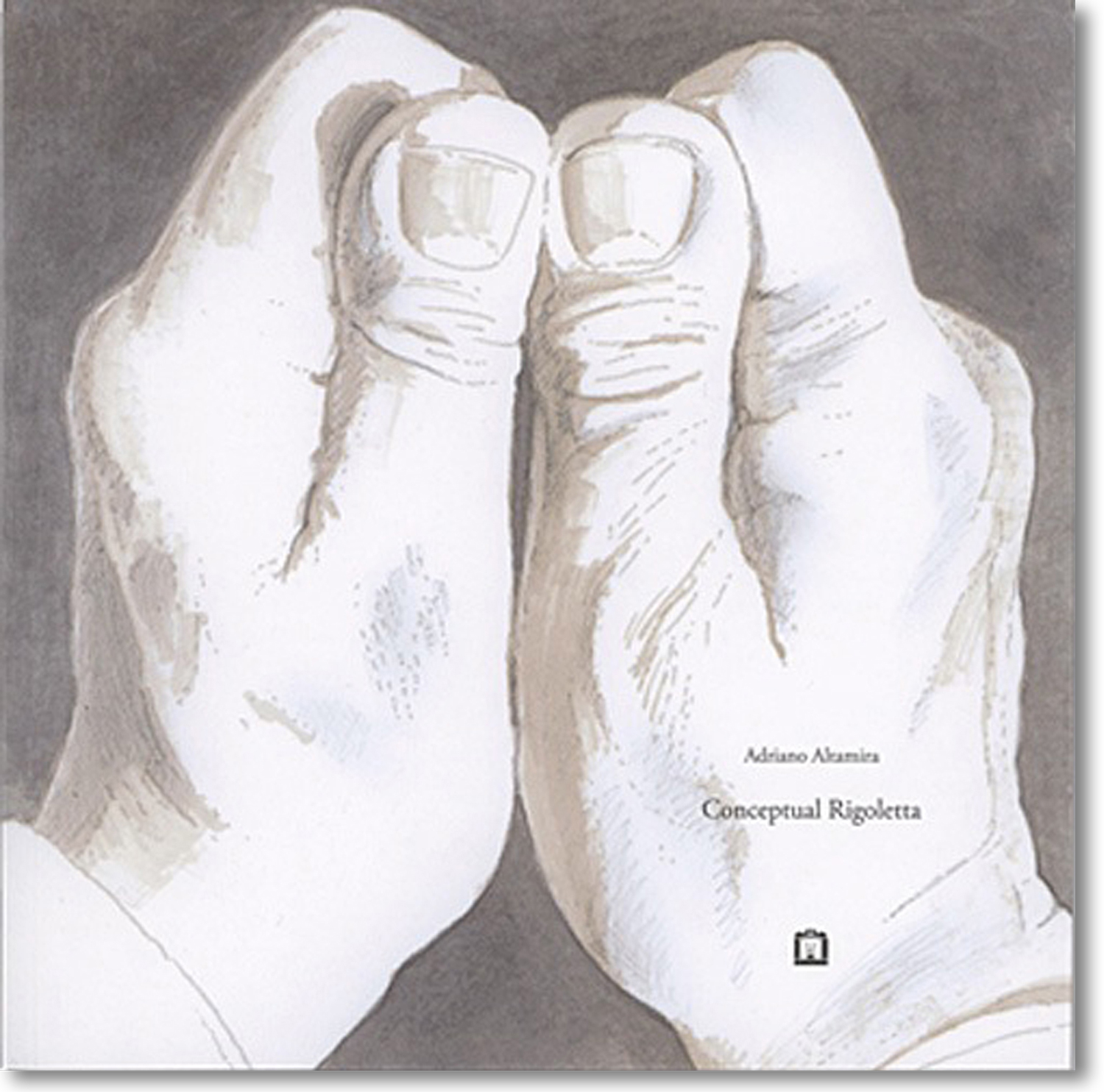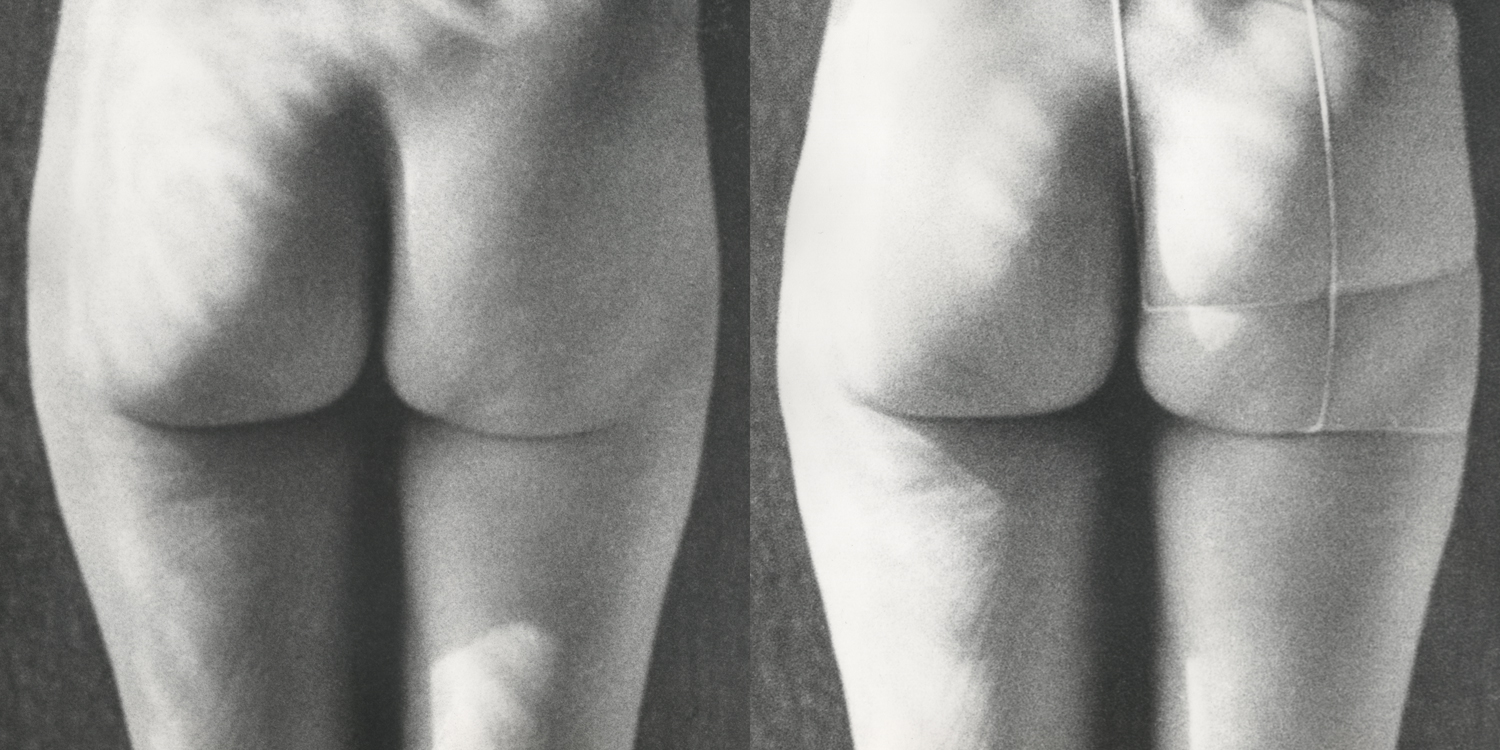


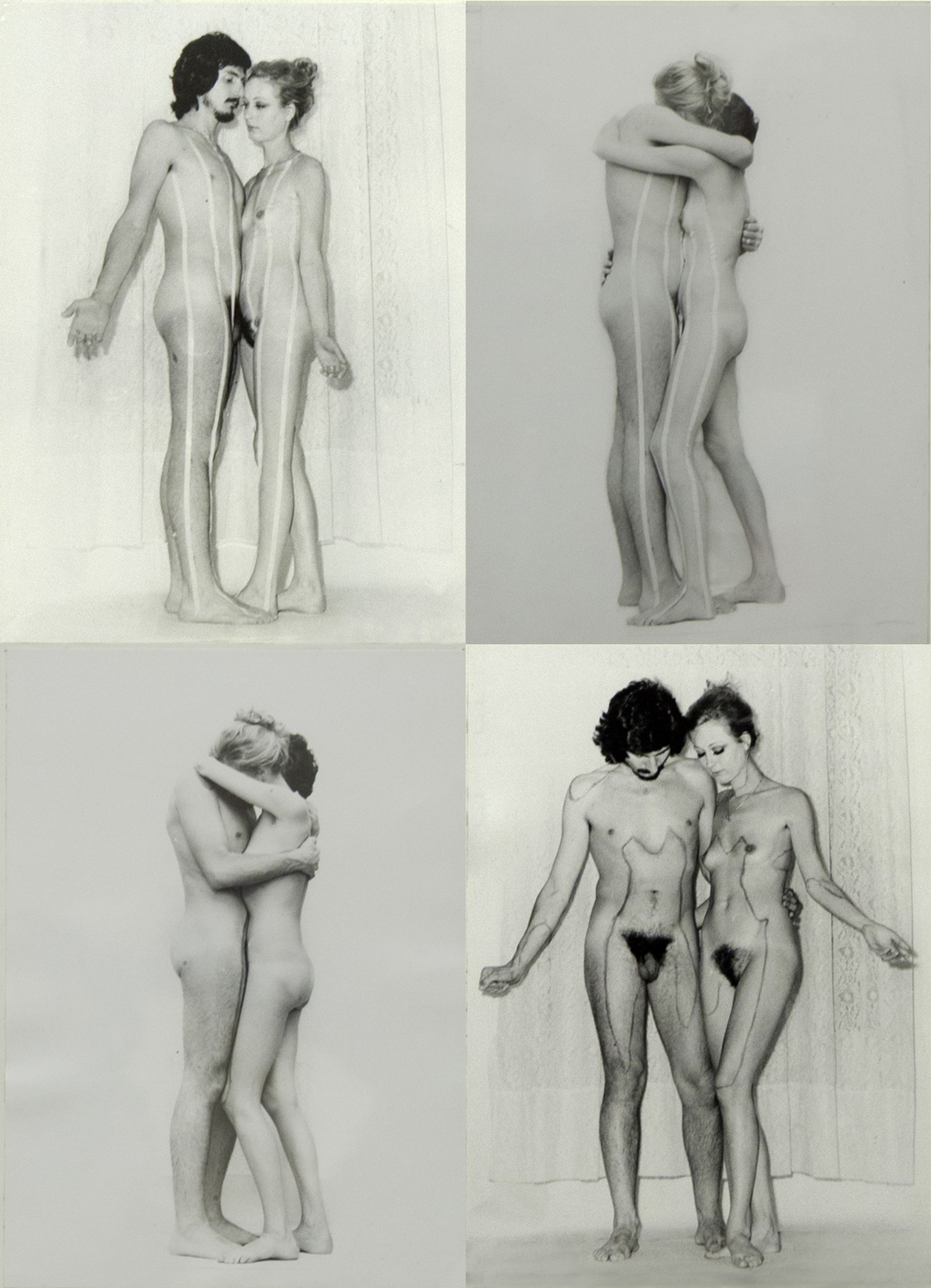

La femme visible (Nudi 1971)
La femme visible è il titolo, conferito a posteriori, di una serie di nudi fotografati dall’autore nell’estate del 1971. Nel 2010, l’autore decide di riunire le foto originali superstiti, e di ristamparle in cinque esemplari, poi esposte nella mostra “Fotografie 1971- 2010” presso la Fondazione Marconi. Tutte le immagini erano state documentate per la prima volta nel catalogo bianco della mostra tenuta nel 1972 presso le Gallerie Cenobio e Visualità associate. Si tratta di un evidente tentativo di unire alla foto di nudo dei procedimenti concettuali, come nell’immagine più nota, in cui sopra il vetro che una donna preme sulle sue natiche è realmente sovrapposta una lastra di plexiglas ottenuta con la dima esatta del vetro fotografato –che risulta, insieme, deformato dall’angolatura prospettica dell’obiettivo, e poi ricollocato nella realtà fisica dello spettatore.
La femme visible (Nudes 1971)
La femme visible is the title, conferred in retrospect, to a series of nudes photographed by the author in the summer of 1971. In 2010, the author decided to reunite the surviving originals, and reprint them in a series of five, for the exhibition "Photographs 1971 - 2010 "at the Marconi Foundation. All the images had been documented for the first time in the white catalogue of the exhibition held in 1972 at the Gallerie Cenobio e Visualità associate. It is a clear attempt to combine nude photography with conceptual process, as in the best-known image, in which a sheet of Plexiglas obtained with an exact template is actually superimposed on top of the glass that a woman presses to her buttocks, which, is deformed by the perspective angle of the lens, and then repositioned in the physical reality of the spectator.
La femme visible è il titolo, conferito a posteriori, di una serie di nudi fotografati dall’autore nell’estate del 1971. Nel 2010, l’autore decide di riunire le foto originali superstiti, e di ristamparle in cinque esemplari, poi esposte nella mostra “Fotografie 1971- 2010” presso la Fondazione Marconi. Tutte le immagini erano state documentate per la prima volta nel catalogo bianco della mostra tenuta nel 1972 presso le Gallerie Cenobio e Visualità associate. Si tratta di un evidente tentativo di unire alla foto di nudo dei procedimenti concettuali, come nell’immagine più nota, in cui sopra il vetro che una donna preme sulle sue natiche è realmente sovrapposta una lastra di plexiglas ottenuta con la dima esatta del vetro fotografato –che risulta, insieme, deformato dall’angolatura prospettica dell’obiettivo, e poi ricollocato nella realtà fisica dello spettatore.
La femme visible (Nudes 1971)
La femme visible is the title, conferred in retrospect, to a series of nudes photographed by the author in the summer of 1971. In 2010, the author decided to reunite the surviving originals, and reprint them in a series of five, for the exhibition "Photographs 1971 - 2010 "at the Marconi Foundation. All the images had been documented for the first time in the white catalogue of the exhibition held in 1972 at the Gallerie Cenobio e Visualità associate. It is a clear attempt to combine nude photography with conceptual process, as in the best-known image, in which a sheet of Plexiglas obtained with an exact template is actually superimposed on top of the glass that a woman presses to her buttocks, which, is deformed by the perspective angle of the lens, and then repositioned in the physical reality of the spectator.



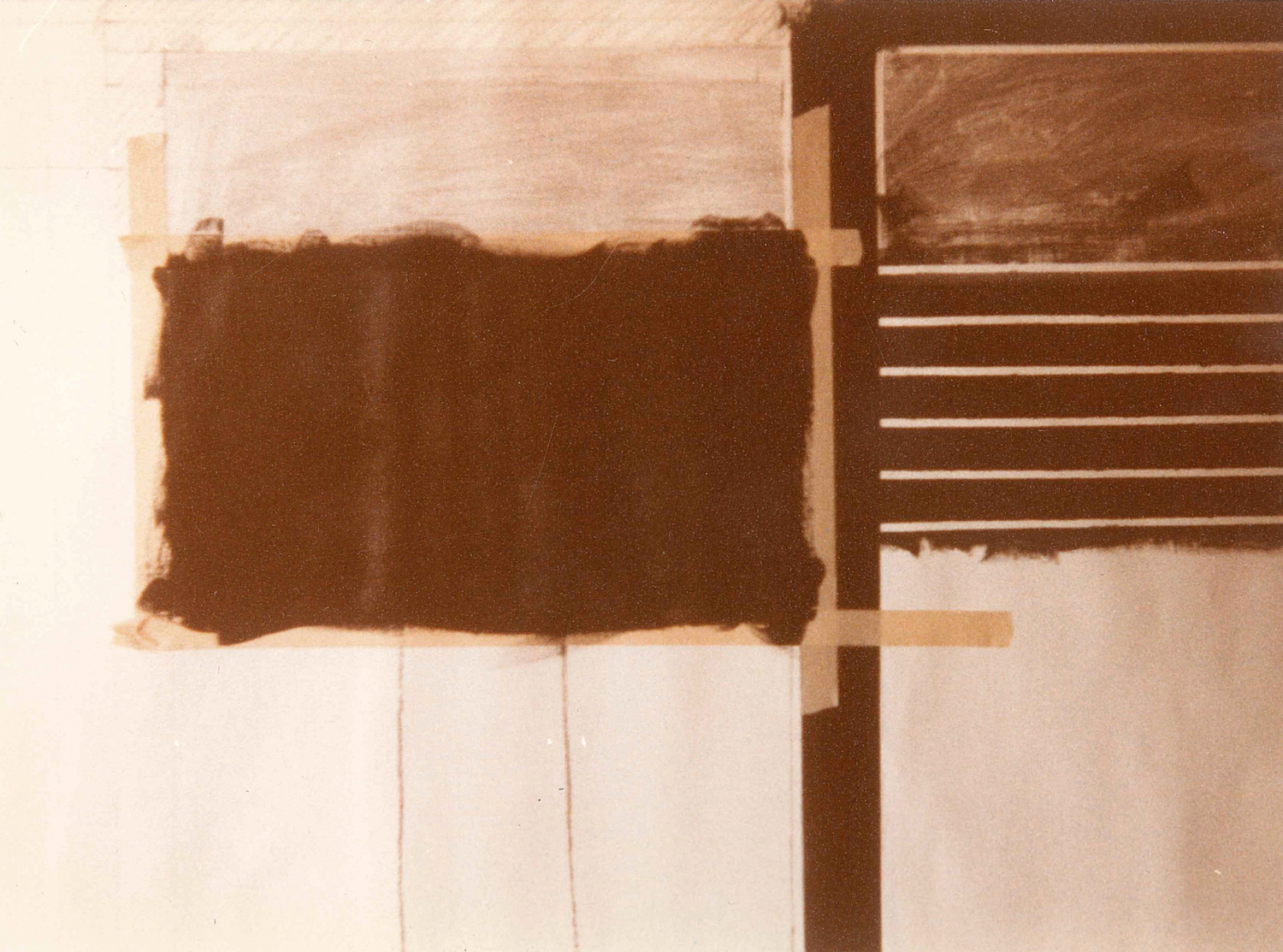




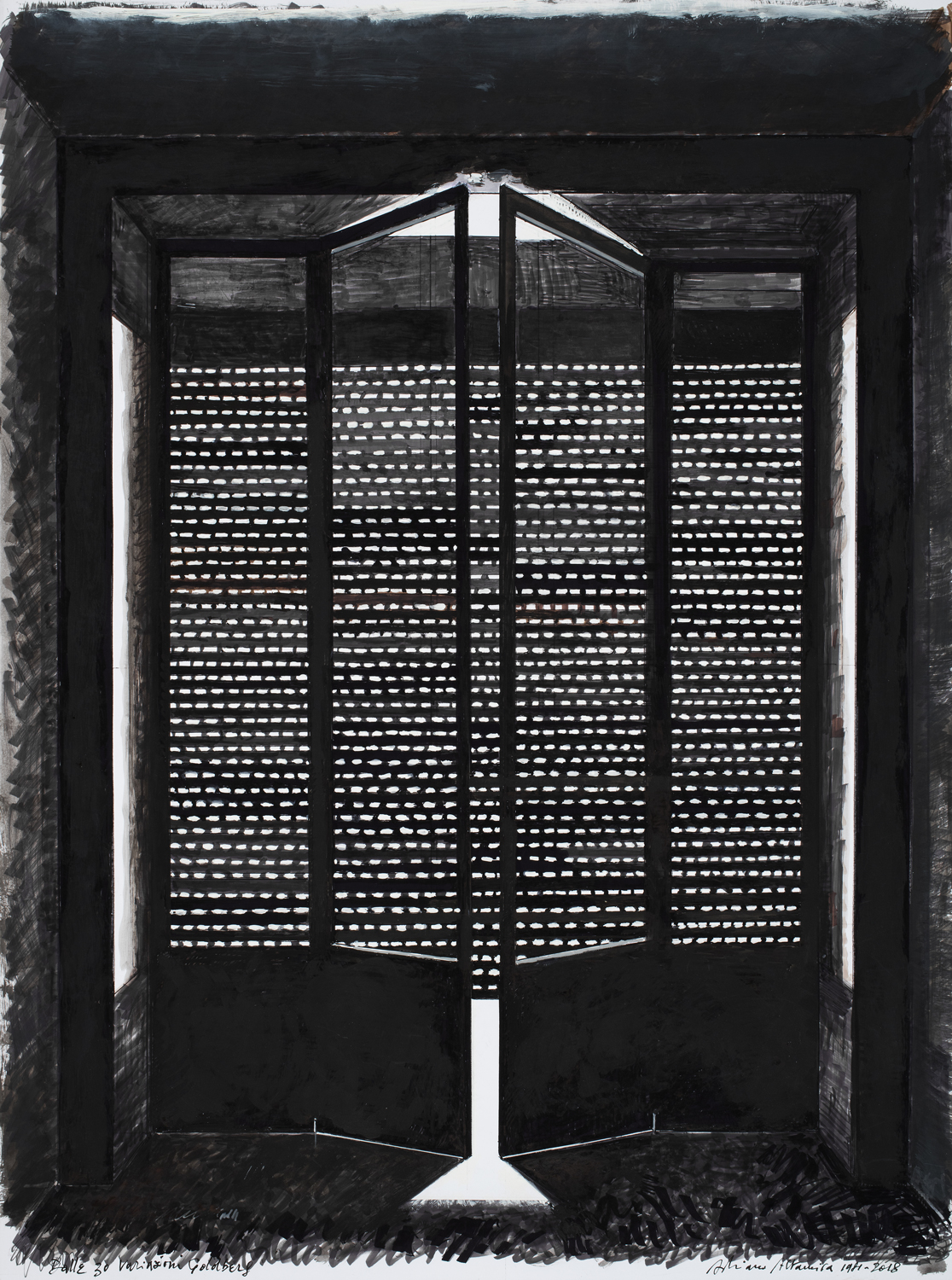

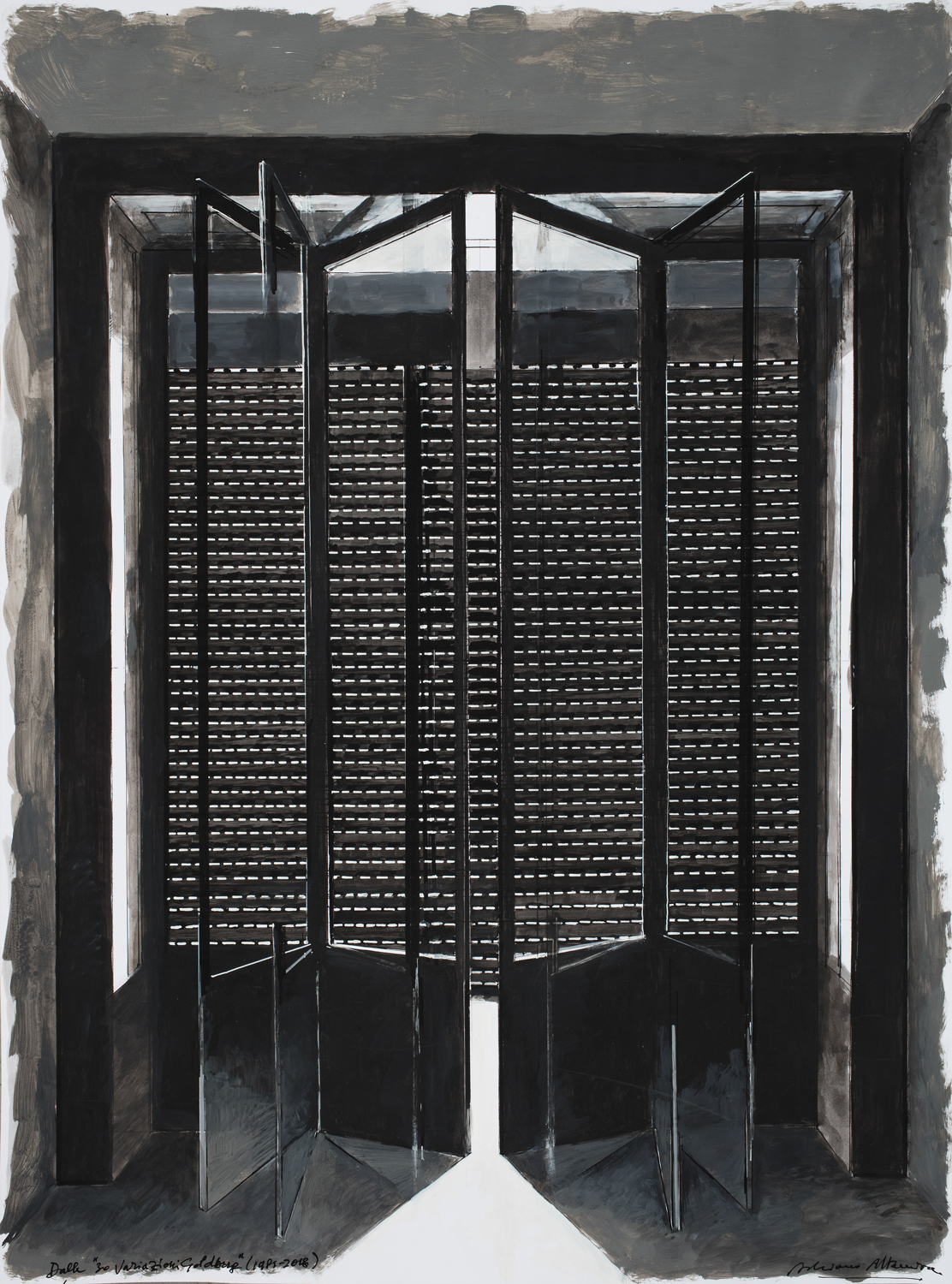


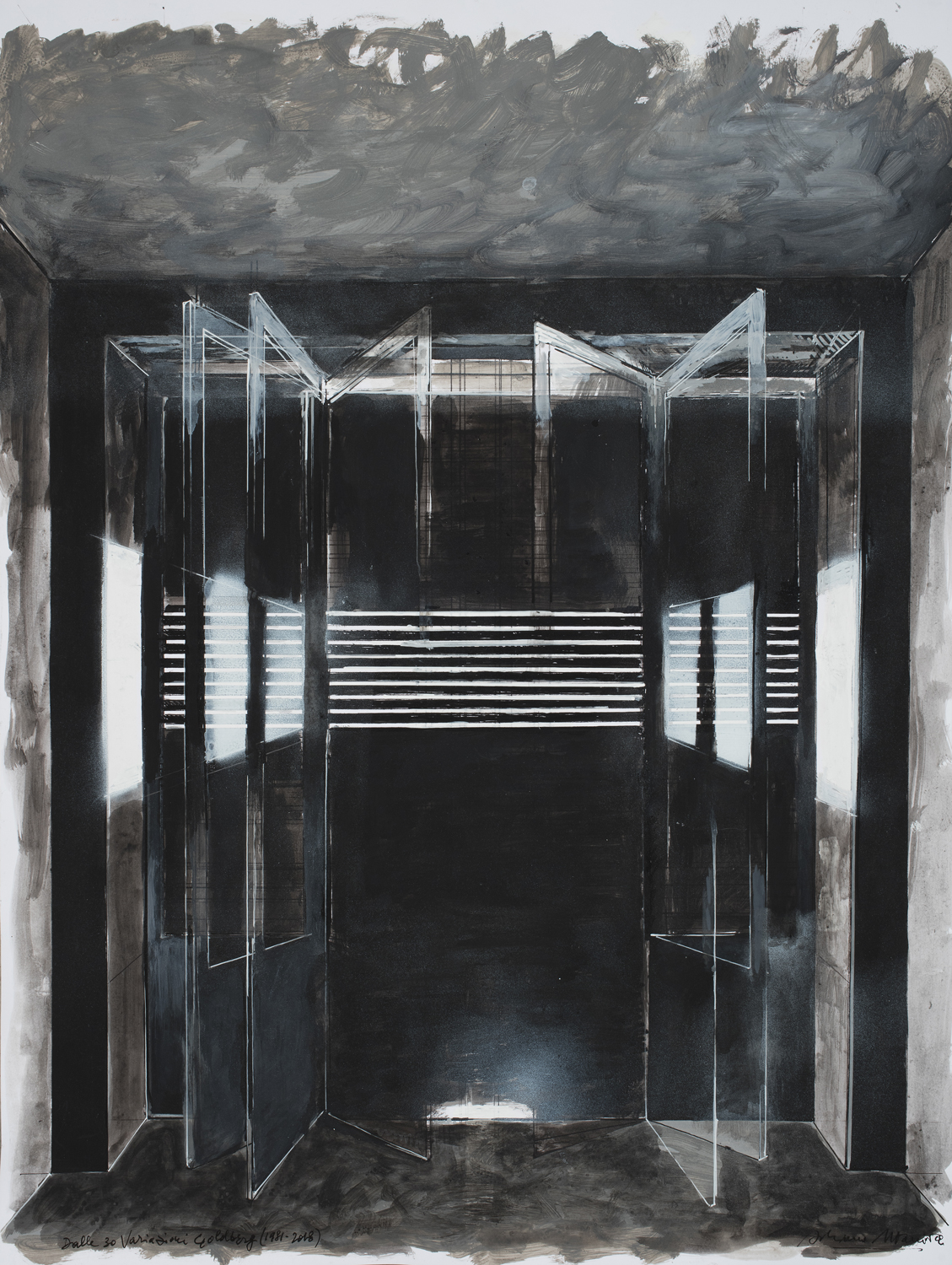

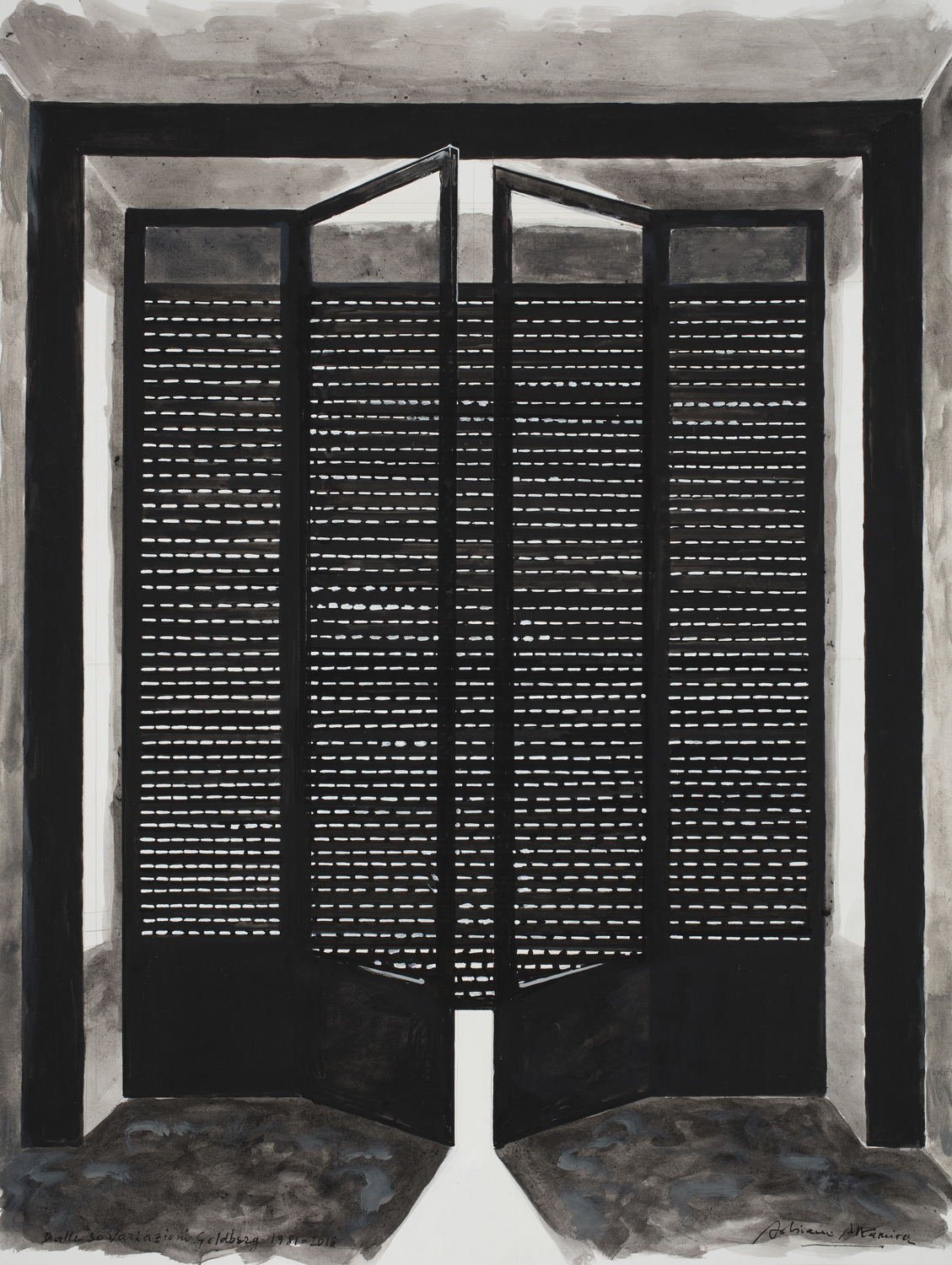
Finestre (Mariti in città, 1980 - 1985 ca.)
Contemporaneamente alle prime registrazioni di sogni, Altamira dà vita ad una serie “anomala” di opere (disegni e pitture), nate sotto l’influsso di una forte emozione, quando -come l’autore racconta ne La forma dei sogni- riesce, dopo quasi un anno passato in ostelli, case di amici, pensioni, a prendere possesso dell’appartamento in cui aveva vissuto da ragazzo.. L’autore entra così, di sera, per la prima volta dopo anni, nell’appartamento, che era completamente vuoto, e privo di illuminazione. La porta-finestra del salone, che riceveva una luce spettrale e verdastra dall’edificio prospiciente, appare ai suoi occhi come un “oggetto magnifico” che in seguito, per alcuni anni, l’autore cerca di riprodurre in una serie di disegni ed installazioni ambientali*. La prima mostra, “Con penetrazioni iridescenti” avviene presso la Galleria Artra nel 1984. Mentre lavora a questa serie, una notte sogna la finestra trasformata in una sorta di enorme maquette di plastica trasparente e carta catramata, a grandezza naturale. Così anche le Finestre vengono a far parte della ricerca sui sogni. La prima esposizione pubblica di una finestra di questo genere, in formato 1/1 (3 metri per 4 ca) ebbe presumibilmente luogo durante la mostra “Intelligenza dell’effetto”, curata da Franco Poli ed Adriano Altamira a Palazzo Dugnani, nel 1985.
* L’idea era quella di creare un ambiente in cui quattro finestre (a grandezza naturale), con alcune modificazioni nella posizione delle ante o delle serrande, rendessero la sensazione della vita quotidiana in una sorta di prigione esistenziale notturna. che suggerisse però la prossimità con la luce di un esterno diurno.
Finestre (Mariti in città, 1980 - c. 1985)
Windows (Husbands in the city)
Concurrent to the first recordings of his dreams, Altamira created an "anomalous" series of works (drawings and paintings), arising from the influence of a strong emotional reaction, which – as the author recounted in La forma dei sogni (The Shape of Dreams) – occured when, after almost a year spent living in hostels, staying with friends and in guest-houses, he managed to take possession of the apartment in which he had lived in as a boy. The author describes entering the apartment one evening for the first time in many years, finding it completely empty, and without electricity. The glass door to the living room, absorbed a spectral greenish light reflected from the facing building, appearing in his eyes like a "magnificent object", that later, over several years, he attempted to reproduce in a series of drawings and environmental installations*. The first exhibition, "Con penetrazioni iridescenti” (With iridescent penetrations) took place at the Artra Gallery in 1984. While working on this series, he dreamed of a window transformed into a sort of huge life-size maquette made of transparent plastic and tar paper. Thus even windows come to be part of the dream research. The first public exhibition of a window of this kind, in 1:1 format (3m x 4m approx.) took place during the exhibition “Intelligenza dell’effetto” (Intelligence of effect) curated by Franco Poli and Adriano Altamira at Palazzo Dugnani, in 1985.
* The idea was to create an environment in which four windows (life-size), following some changes in the position of the slats and shutters, would create the feeling of everyday life in a sort of nocturnal existential prison, with however, a suggested proximity to the light of a diurnal exterior.
Contemporaneamente alle prime registrazioni di sogni, Altamira dà vita ad una serie “anomala” di opere (disegni e pitture), nate sotto l’influsso di una forte emozione, quando -come l’autore racconta ne La forma dei sogni- riesce, dopo quasi un anno passato in ostelli, case di amici, pensioni, a prendere possesso dell’appartamento in cui aveva vissuto da ragazzo.. L’autore entra così, di sera, per la prima volta dopo anni, nell’appartamento, che era completamente vuoto, e privo di illuminazione. La porta-finestra del salone, che riceveva una luce spettrale e verdastra dall’edificio prospiciente, appare ai suoi occhi come un “oggetto magnifico” che in seguito, per alcuni anni, l’autore cerca di riprodurre in una serie di disegni ed installazioni ambientali*. La prima mostra, “Con penetrazioni iridescenti” avviene presso la Galleria Artra nel 1984. Mentre lavora a questa serie, una notte sogna la finestra trasformata in una sorta di enorme maquette di plastica trasparente e carta catramata, a grandezza naturale. Così anche le Finestre vengono a far parte della ricerca sui sogni. La prima esposizione pubblica di una finestra di questo genere, in formato 1/1 (3 metri per 4 ca) ebbe presumibilmente luogo durante la mostra “Intelligenza dell’effetto”, curata da Franco Poli ed Adriano Altamira a Palazzo Dugnani, nel 1985.
* L’idea era quella di creare un ambiente in cui quattro finestre (a grandezza naturale), con alcune modificazioni nella posizione delle ante o delle serrande, rendessero la sensazione della vita quotidiana in una sorta di prigione esistenziale notturna. che suggerisse però la prossimità con la luce di un esterno diurno.
Finestre (Mariti in città, 1980 - c. 1985)
Windows (Husbands in the city)
Concurrent to the first recordings of his dreams, Altamira created an "anomalous" series of works (drawings and paintings), arising from the influence of a strong emotional reaction, which – as the author recounted in La forma dei sogni (The Shape of Dreams) – occured when, after almost a year spent living in hostels, staying with friends and in guest-houses, he managed to take possession of the apartment in which he had lived in as a boy. The author describes entering the apartment one evening for the first time in many years, finding it completely empty, and without electricity. The glass door to the living room, absorbed a spectral greenish light reflected from the facing building, appearing in his eyes like a "magnificent object", that later, over several years, he attempted to reproduce in a series of drawings and environmental installations*. The first exhibition, "Con penetrazioni iridescenti” (With iridescent penetrations) took place at the Artra Gallery in 1984. While working on this series, he dreamed of a window transformed into a sort of huge life-size maquette made of transparent plastic and tar paper. Thus even windows come to be part of the dream research. The first public exhibition of a window of this kind, in 1:1 format (3m x 4m approx.) took place during the exhibition “Intelligenza dell’effetto” (Intelligence of effect) curated by Franco Poli and Adriano Altamira at Palazzo Dugnani, in 1985.
* The idea was to create an environment in which four windows (life-size), following some changes in the position of the slats and shutters, would create the feeling of everyday life in a sort of nocturnal existential prison, with however, a suggested proximity to the light of a diurnal exterior.





Giudizio sul Giudizio (1996 - 2008 ca.)
Come le Finestre risultano essere quasi il controcanto, o comunque l’ espressione manuale e pittorica del lavoro sui Sogni; Giudizio sul Giudizio è il tentativo di concentrare in un’unica immagine eseguita a mano, la riflessione concettuale sull’idea di Giudizio finale, che Piccola Apocalisse sparpagliava in una sorta di mosaico di immagini trovate, di impossessamenti, di collage e di ricombinazioni. E’ all’interno della Piccola Apocalisse stessa che si trova la prima descrizione della nascita di questa ricerca: nel 1996 l’autore esegue tre rilievi a misura del Giudizio della Sistina e di due sue copie quasi coeve (la miniatura di Giulio Clovio e il quadro di Marcello Venusti). Nonostante lo scrupolo di esattezza nel rendere le proporzioni dell’opera di Michelangelo, entrambe le copie risultano difformi, tanto che, sovrapponendole, ne risulta un’immagine nuova che sembra rivelare, grazie ai suoi errori, l’architettura dello spazio creata dal Buonarroti. Questo proprio perché le linee non si sovrappongono esattamente, ma sommandosi, si accavallano in una disordinata oscillazione dei neri, fino a creare una sorta di fantasma del Giudizio. Non i personaggi, ma le masse astratte della composizione vengono così esaltate, creando una seconda immagine del Giudizio. Lavorando su questa impossibilità di riprodurre un oggetto così gigantesco e complesso come il Giudizio, l’autore si lascia andare a quella che battezza “l’incertezza del copista” riproducendo il Giudizio in una serie di variazioni.
Un trittico (tre immagini di 1,5 m x 1m) viene esposto alla Quadriennale di Roma del 2005.
Tre anni più tardi, in una mostra presso la Fondazione Marconi, presenta una selezione di studi con alcune grandi prove di 3 x 2m.
Giudizio sul Giudizio (1996 - c. 2008)
(Judgment on Judgment)
Just as Finestre is almost the counterpoint, or the manual and pictorial expression of the work on Sogni; Giudizio sul Giudizio is the attempt to concentrate in a single hand-made image, a conceptual reflection on the idea of The Final Judgment, which in Piccola Apocalisse was instead scattered in a sort of mosaic of found images, of re-appropriations, of collages and of re-workings. It is within Piccola Apocalisse itself that we can trace the first reference for the birth of this research: in 1996 the author made three surveys to measure The Final Judgement in the Sistine chapel and two of its almost coeval copies (the miniature by Giulio Clovio and the painting by Marcello Venusti). Despite the attempts of accurately rendering the proportions of Michelangelo's work, the copies were different, so that, by overlapping them, a new image emerged that seemed to reveal, because of its errors, the architecture of the space created by Buonarroti. This was caused by the lines not overlapping exactly, but when they did, they appeared in a disordered oscillation of blacks, that created a sort of ghosting. It was not the protagonists therefore, but the abstract masses of the composition that were brought to the fore, creating a second image of the Judgment. Elaborating the impossibility of reproducing such a gigantic and complex object as The Final Judgment, the author abandoned himself to what he labelled as "the uncertainty of the copyist" reproducing the work in a series of variations.
A triptych (three images – 1.5m x 1m) was exhibited at the Rome Quadrenniale in 2005. Three years later, in an exhibition at the Marconi Foundation, he presented a selection of studies with some large (3m x 2m) proofs.
Come le Finestre risultano essere quasi il controcanto, o comunque l’ espressione manuale e pittorica del lavoro sui Sogni; Giudizio sul Giudizio è il tentativo di concentrare in un’unica immagine eseguita a mano, la riflessione concettuale sull’idea di Giudizio finale, che Piccola Apocalisse sparpagliava in una sorta di mosaico di immagini trovate, di impossessamenti, di collage e di ricombinazioni. E’ all’interno della Piccola Apocalisse stessa che si trova la prima descrizione della nascita di questa ricerca: nel 1996 l’autore esegue tre rilievi a misura del Giudizio della Sistina e di due sue copie quasi coeve (la miniatura di Giulio Clovio e il quadro di Marcello Venusti). Nonostante lo scrupolo di esattezza nel rendere le proporzioni dell’opera di Michelangelo, entrambe le copie risultano difformi, tanto che, sovrapponendole, ne risulta un’immagine nuova che sembra rivelare, grazie ai suoi errori, l’architettura dello spazio creata dal Buonarroti. Questo proprio perché le linee non si sovrappongono esattamente, ma sommandosi, si accavallano in una disordinata oscillazione dei neri, fino a creare una sorta di fantasma del Giudizio. Non i personaggi, ma le masse astratte della composizione vengono così esaltate, creando una seconda immagine del Giudizio. Lavorando su questa impossibilità di riprodurre un oggetto così gigantesco e complesso come il Giudizio, l’autore si lascia andare a quella che battezza “l’incertezza del copista” riproducendo il Giudizio in una serie di variazioni.
Un trittico (tre immagini di 1,5 m x 1m) viene esposto alla Quadriennale di Roma del 2005.
Tre anni più tardi, in una mostra presso la Fondazione Marconi, presenta una selezione di studi con alcune grandi prove di 3 x 2m.
Giudizio sul Giudizio (1996 - c. 2008)
(Judgment on Judgment)
Just as Finestre is almost the counterpoint, or the manual and pictorial expression of the work on Sogni; Giudizio sul Giudizio is the attempt to concentrate in a single hand-made image, a conceptual reflection on the idea of The Final Judgment, which in Piccola Apocalisse was instead scattered in a sort of mosaic of found images, of re-appropriations, of collages and of re-workings. It is within Piccola Apocalisse itself that we can trace the first reference for the birth of this research: in 1996 the author made three surveys to measure The Final Judgement in the Sistine chapel and two of its almost coeval copies (the miniature by Giulio Clovio and the painting by Marcello Venusti). Despite the attempts of accurately rendering the proportions of Michelangelo's work, the copies were different, so that, by overlapping them, a new image emerged that seemed to reveal, because of its errors, the architecture of the space created by Buonarroti. This was caused by the lines not overlapping exactly, but when they did, they appeared in a disordered oscillation of blacks, that created a sort of ghosting. It was not the protagonists therefore, but the abstract masses of the composition that were brought to the fore, creating a second image of the Judgment. Elaborating the impossibility of reproducing such a gigantic and complex object as The Final Judgment, the author abandoned himself to what he labelled as "the uncertainty of the copyist" reproducing the work in a series of variations.
A triptych (three images – 1.5m x 1m) was exhibited at the Rome Quadrenniale in 2005. Three years later, in an exhibition at the Marconi Foundation, he presented a selection of studies with some large (3m x 2m) proofs.
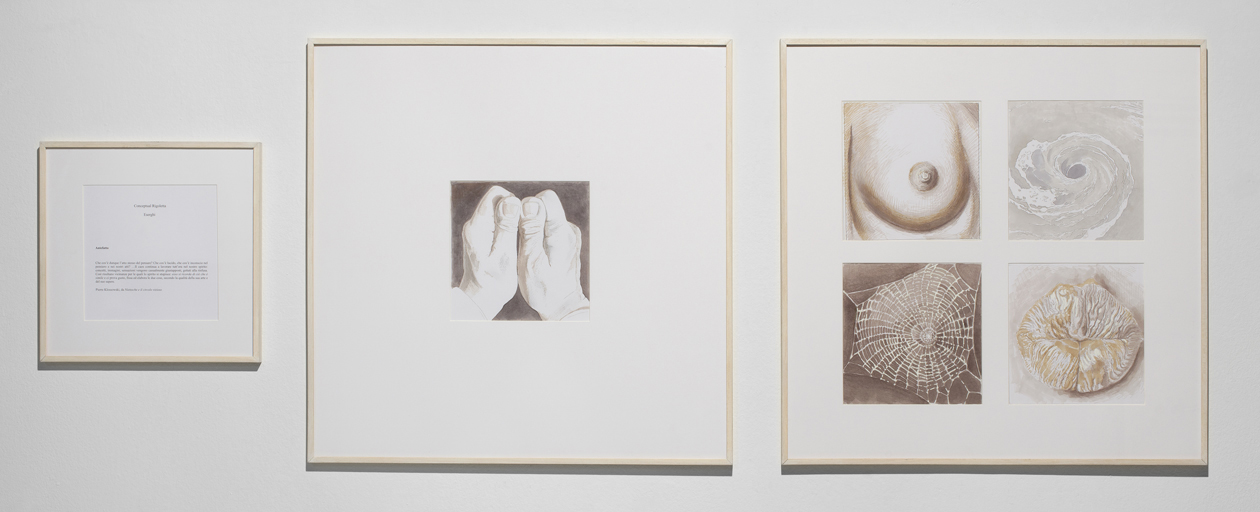


Conceptual Rigoletta (2014 - 2017 ca.)
Conceptual Rigoletta è il titolo di un romanzo per immagini concepito ed eseguito da Adriano Altamira fra il 2013 e il 2017 pubblicato dalla Corraini ed. in occasione della mostra omonima presso la Fondazione Marconi di Milano nel Febbraio 2018. Nonostante l’evidente riferimento alla Trilogia di Max Ernst ( La Femme 100 tête, ecc.) Conceptual Rigoletta trova il suo riferimento più diretto in una breve sequenza di disegni eseguita ed esposta dall’autore nel 1974, pubblicata nel volume come “antefatto”. Seguono 12 capitoletti illustrati da sequenze di 5 disegni tutte basate, come l’ “antefatto”, da libere associazioni poi tradotte in altrettante storie.
Conceptual Rigoletta (2014 - c. 2017)
In the four year period in which the author assisted his seriously ill wife, almost without leaving his home, a new attempt to combine painting and literature was born: Conceptual Rigoletta.
The title came from a nonsense written a few years earlier: "Art is still / what rare event / silent in the middle / of its thoughts" - to be sung on the theme of Verdi’s aria "La donna è mobile" (Woman is fickle).
Despite the apparently lighthearted tone, Conceptual Rigoletta presented itself as a novel for images, both ecstatic and dramatic, born in the wake of the surrealist works of Max Ernst (La femme 100 tetes, Reve d'une petite fille qui voulut entrer au Carmel, Una semaine de bonté). Although there were elements of irony, the general feel was that of a wild-eyed meditation on the contemporary meaning of the image, and on the value of drawing. The link between the images was established through mental associations, based on a previous work from 1974, in which for the first time, following on a predominantly photographic research, the author unexpectedly replaced photography with drawing.
Conceptual Rigoletta è il titolo di un romanzo per immagini concepito ed eseguito da Adriano Altamira fra il 2013 e il 2017 pubblicato dalla Corraini ed. in occasione della mostra omonima presso la Fondazione Marconi di Milano nel Febbraio 2018. Nonostante l’evidente riferimento alla Trilogia di Max Ernst ( La Femme 100 tête, ecc.) Conceptual Rigoletta trova il suo riferimento più diretto in una breve sequenza di disegni eseguita ed esposta dall’autore nel 1974, pubblicata nel volume come “antefatto”. Seguono 12 capitoletti illustrati da sequenze di 5 disegni tutte basate, come l’ “antefatto”, da libere associazioni poi tradotte in altrettante storie.
Conceptual Rigoletta (2014 - c. 2017)
In the four year period in which the author assisted his seriously ill wife, almost without leaving his home, a new attempt to combine painting and literature was born: Conceptual Rigoletta.
The title came from a nonsense written a few years earlier: "Art is still / what rare event / silent in the middle / of its thoughts" - to be sung on the theme of Verdi’s aria "La donna è mobile" (Woman is fickle).
Despite the apparently lighthearted tone, Conceptual Rigoletta presented itself as a novel for images, both ecstatic and dramatic, born in the wake of the surrealist works of Max Ernst (La femme 100 tetes, Reve d'une petite fille qui voulut entrer au Carmel, Una semaine de bonté). Although there were elements of irony, the general feel was that of a wild-eyed meditation on the contemporary meaning of the image, and on the value of drawing. The link between the images was established through mental associations, based on a previous work from 1974, in which for the first time, following on a predominantly photographic research, the author unexpectedly replaced photography with drawing.

